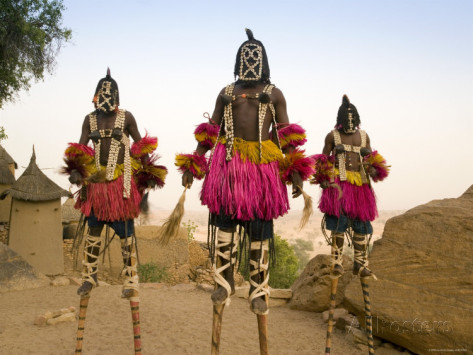These brehs formed complex astrology in the mountains of Mali with NO modern technology...
According to their traditions, the star Sirius has a companion star which is invisible to the human eye. This companion star has a 50 year elliptical orbit around the visible Sirius and is extremely heavy. It also rotates on its axis.they made his discovery before modern science did, without any technology
This tribe is so mysterious and powerful that cac con piracy theorists like David Icke believe they made and currently make contact with Aliens...
Black people untouched by slavery do amazing things.
Dogon people - Wikipedia, the free encyclopedia
According to their traditions, the star Sirius has a companion star which is invisible to the human eye. This companion star has a 50 year elliptical orbit around the visible Sirius and is extremely heavy. It also rotates on its axis.they made his discovery before modern science did, without any technology
This tribe is so mysterious and powerful that cac con piracy theorists like David Icke believe they made and currently make contact with Aliens...

Black people untouched by slavery do amazing things.
In late 1946, Griaule spent a consecutive thirty-three days in conversations with the Dogon wiseman Ogotemmêli, the source of much of Griaule and Dieterlen's future publications.[31] They reported that the Dogon believe that the brightest star in the sky, Sirius (sigi tolo or "star of the Sigui"[32]), has two companion stars, pō tolo (the Digitaria star), and ęmmę ya tolo, (the female Sorghum star), respectively the first and second companions of Sirius A.[33] Sirius, in the Dogon system, formed one of the foci for the orbit of a tiny star, the companionate Digitaria star. When Digitaria is closest to Sirius, that star brightens: when it is farthest from Sirius, it gives off a twinkling effect that suggests to the observer several stars. The orbit cycle takes 50 years.[34] They also claimed that the Dogon appeared to know of the rings of Saturn, and the moons of Jupiter.[35]
Dogon people - Wikipedia, the free encyclopedia













 are you reading a book or various internet sites?
are you reading a book or various internet sites?